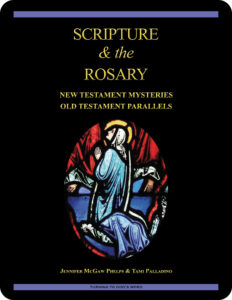greatly troubled
 The Solemnity of the Annunciation of the Lord commemorates the angel Gabriel announcing to the Blessed Virgin Mary that she is to conceive. This feast celebrates one of the great Christian mysteries, the announcement of the Incarnation, God becoming human. The readings also show us the response of Mary and through her the response of all humanity to this great mystery.
The Solemnity of the Annunciation of the Lord commemorates the angel Gabriel announcing to the Blessed Virgin Mary that she is to conceive. This feast celebrates one of the great Christian mysteries, the announcement of the Incarnation, God becoming human. The readings also show us the response of Mary and through her the response of all humanity to this great mystery.
The reading from the Gospel According to Luke 1:29 (NABRE) states that Mary “was greatly troubled at what was said and pondered what sort of greeting this might be.” When we consider that the Blessed Virgin Mary is the perfect representative of humanity to God, it seems odd to think of her being greatly troubled by being chosen to give birth to the Messiah. Fortunately, the Greek lends some clarity.
The Greek word used here is διαταράσσω (diatarasso), an intensified version of the verb ταράσσω (tarasso). This verb literally means “stirred,” “mixed,” or “jumbled up,” and from that root the word also can come to mean “troubled” or “agitated.” Closer to the root meaning, however, is the idea that this mental stirring or mixing means “confused,” a meaning far more consistent with what we would expect in this circumstance.
A better way to think about this passage from the Gospel According to Luke, then, is that Mary’s response to God is not one of being troubled or disconcerted but rather one of confusion, as her later question indicates: “How can this be?”
What would your response be in her situation? Does this series of events cause you confusion today?
related topics: favor with God; magnify; parthenos
you also may like our study of Scripture & the Rosary (digital only)
 Scripture & the Rosary: New Testament Mysteries, Old Testament Parallels, a 26-lesson Catholic Bible study with an imprimatur, looks at the biblical foundations of the Rosary. The study includes lessons on Pope St. John Paul II’s Rosarium Virginis Mariae (Rosary of the Virgin Mary), the Apostles’ Creed, and the Luminous Mysteries as well as the original 15 Mysteries of the Rosary. Color photographs of stained glass windows depict key scenes in the lives of Jesus and Mary. Free digital lessons rotate throughout the year on our website.
Scripture & the Rosary: New Testament Mysteries, Old Testament Parallels, a 26-lesson Catholic Bible study with an imprimatur, looks at the biblical foundations of the Rosary. The study includes lessons on Pope St. John Paul II’s Rosarium Virginis Mariae (Rosary of the Virgin Mary), the Apostles’ Creed, and the Luminous Mysteries as well as the original 15 Mysteries of the Rosary. Color photographs of stained glass windows depict key scenes in the lives of Jesus and Mary. Free digital lessons rotate throughout the year on our website.
 Click on the picture of the statue of Moses with horns (above) to learn more about Lost in Translation. A new entry is archived each Monday. Contact us to receive Lost in Translation by email every week. You may use any of the contact links on our website to ask Matthew a question.
Click on the picture of the statue of Moses with horns (above) to learn more about Lost in Translation. A new entry is archived each Monday. Contact us to receive Lost in Translation by email every week. You may use any of the contact links on our website to ask Matthew a question.
